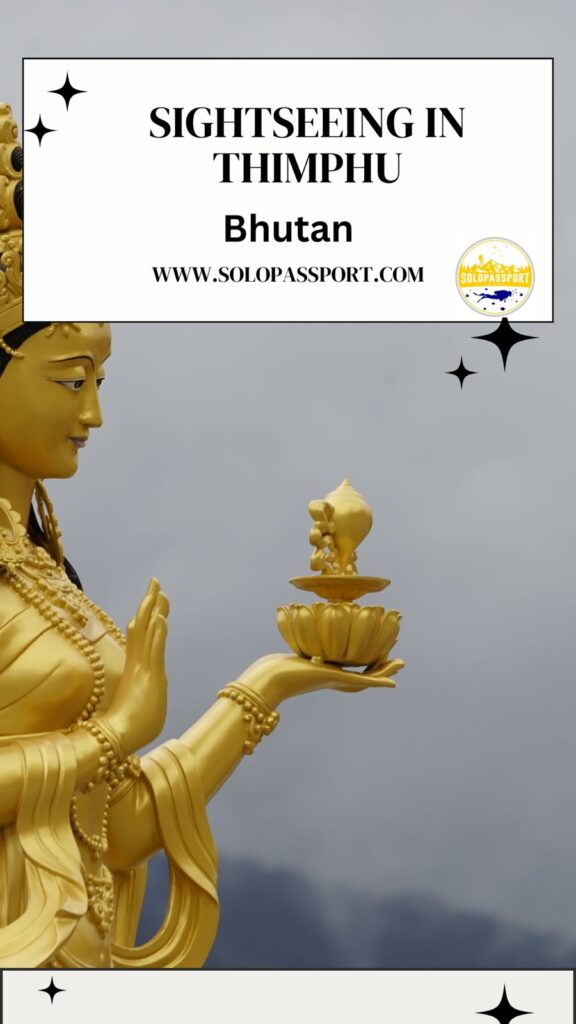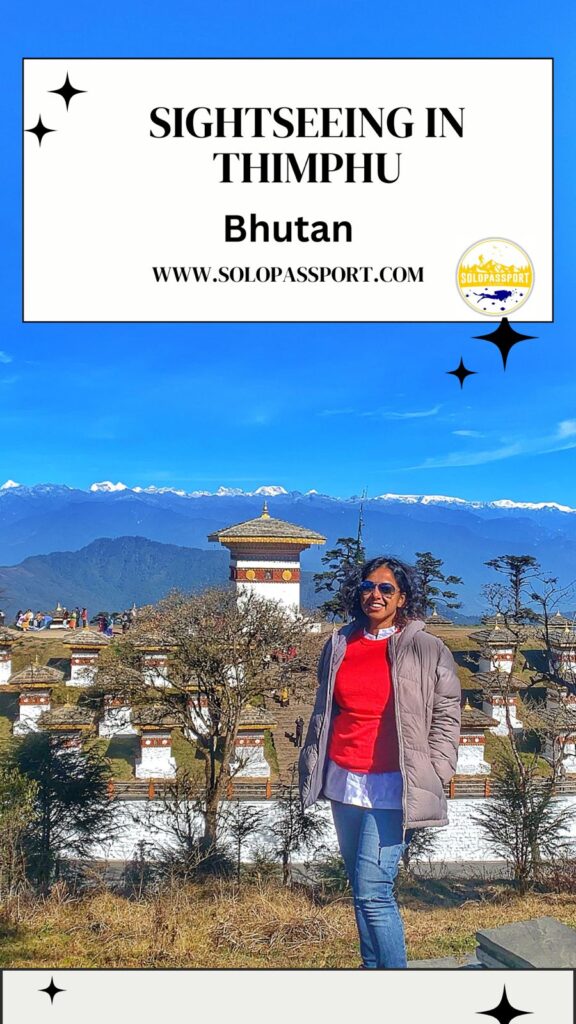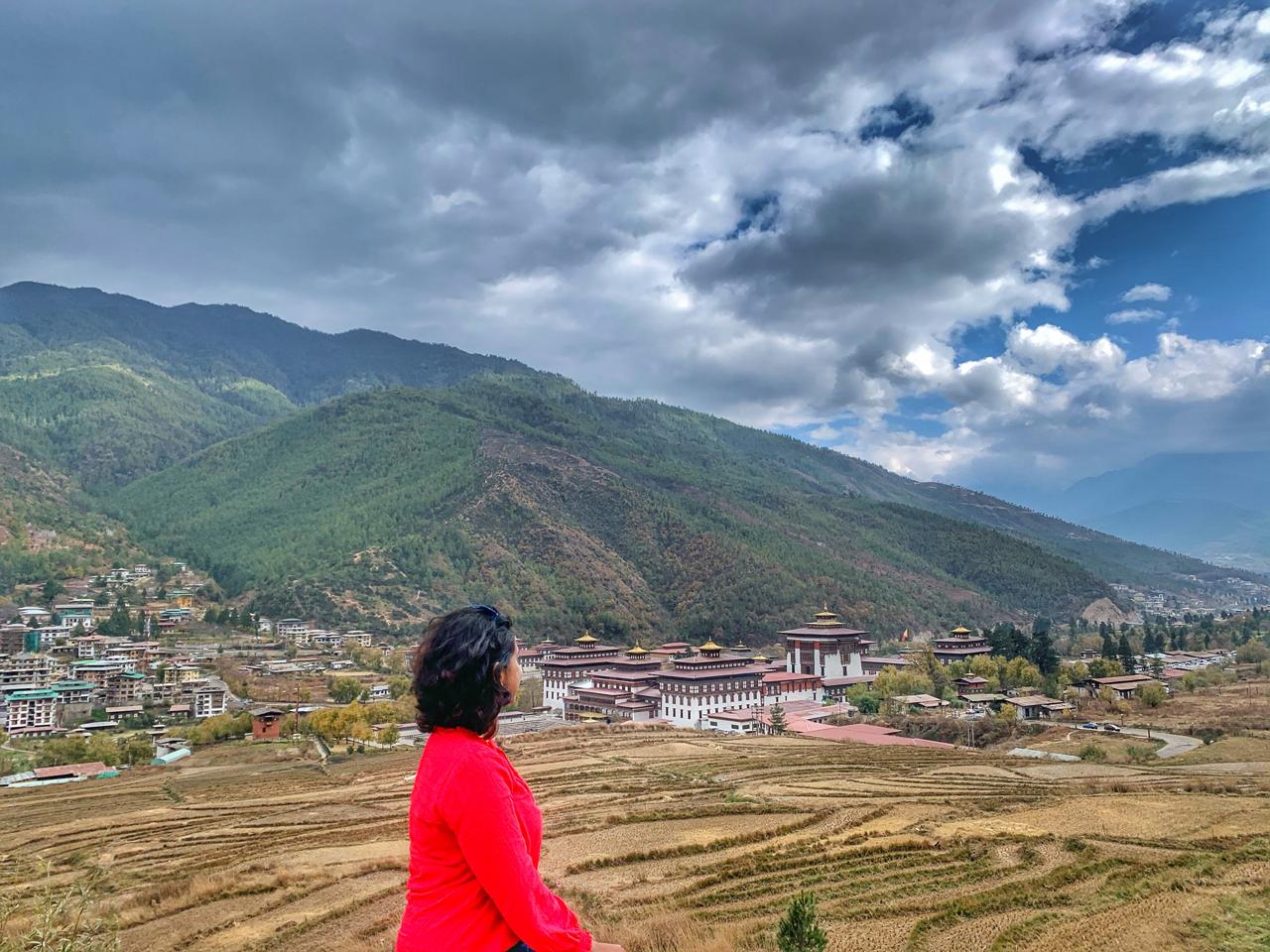Sightseeing in Thimphu: Unveiling the Charm of Bhutan’s Capital City (2025)
Exploring Bhutan is an enriching experience, and a visit to its vibrant capital, Thimphu, is essential for a comprehensive understanding of the country’s culture and heritage. As a gateway to further exploration of Bhutan, including destinations like Paro and Punakha, Thimphu captivates visitors with its unique charm and significance. My journey to Bhutan encompassed a seven-day itinerary, with a pivotal stop being staying and sightseeing in Thimphu.
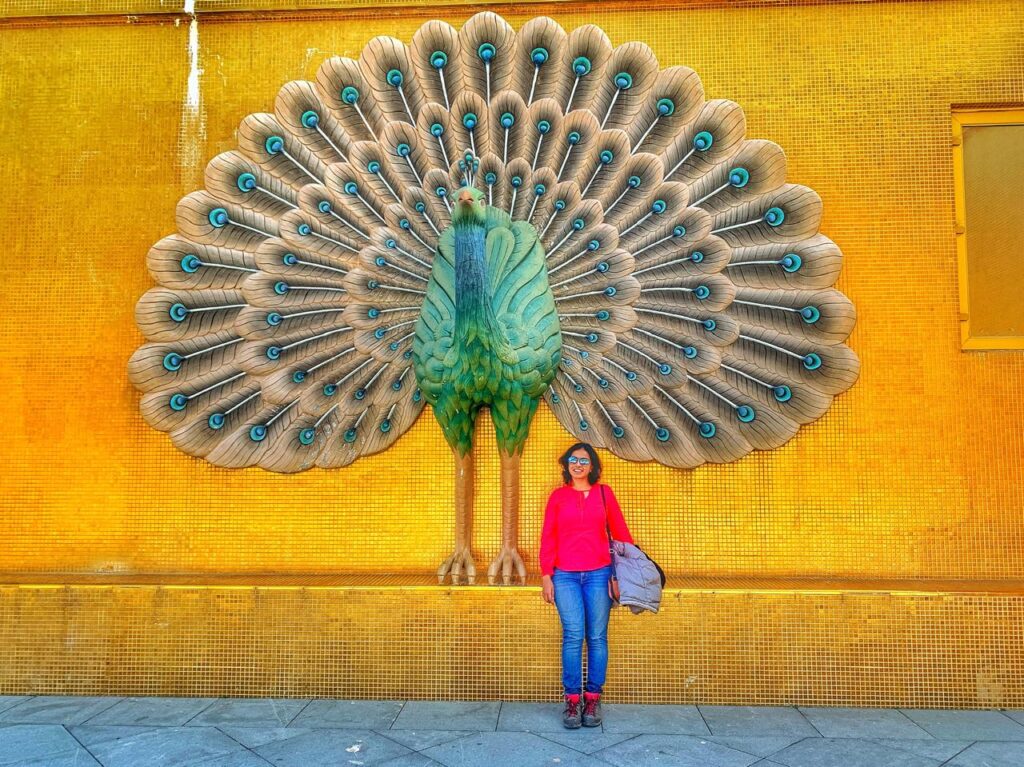
Embarking on a road trip from Bagdogra Airport in India, I travelled through scenic landscapes to Thimphu via Phuentsholing. This route provided a glimpse into Bhutan’s natural beauty and cultural diversity, setting the stage for an immersive experience in the capital city.
In Thimphu, I discovered various sightseeing places that showcased the city’s cultural richness. Iconic landmarks such as the majestic Tashichho Dzong, the serene Memorial Chorten, and the impressive Buddha Dordenma Statue offered glimpses into Bhutan’s spiritual and architectural heritage. Exploring local markets, engaging in traditional performances, and visiting museums provided more profound insights into Bhutanese customs and traditions.
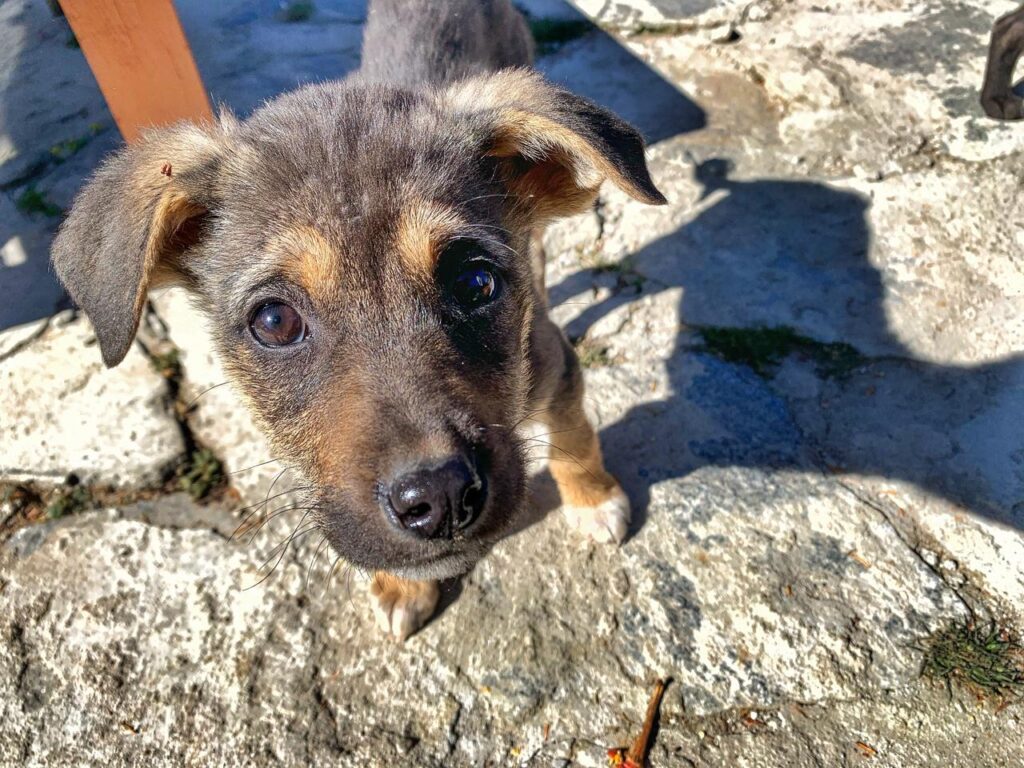
Thimphu’s allure extends beyond its tangible attractions, encompassing its people’s warmth and the rhythm of daily life. My visit to the city proved significant as a cultural hub and an example of Bhutan’s timeless appeal. In this post, I aim to share valuable insights and experiences from my exploration of Thimphu, offering a glimpse into the heart of Bhutan’s capital city.
This article may contain affiliate links, meaning if you decide to purchase via my links, I may earn a commission at no additional cost to you. For complete information, please see our affiliate disclaimer here.
Page Contents
About Thimphu
Thimphu, the capital city of Bhutan, stands out as a captivating destination renowned for its stunning landscapes and vibrant cultural heritage. Since its designation as the capital of the Kingdom of Bhutan in 1955, Thimphu has held a special place in the hearts of travellers worldwide.
The essence of Bhutanese culture permeates every aspect of life in Thimphu, evident in its literature, religious practices, customs, and traditional attire. Monastic rituals in the city’s monasteries and rich musical and dance traditions offer a profound insight into the country’s spiritual and artistic heritage.
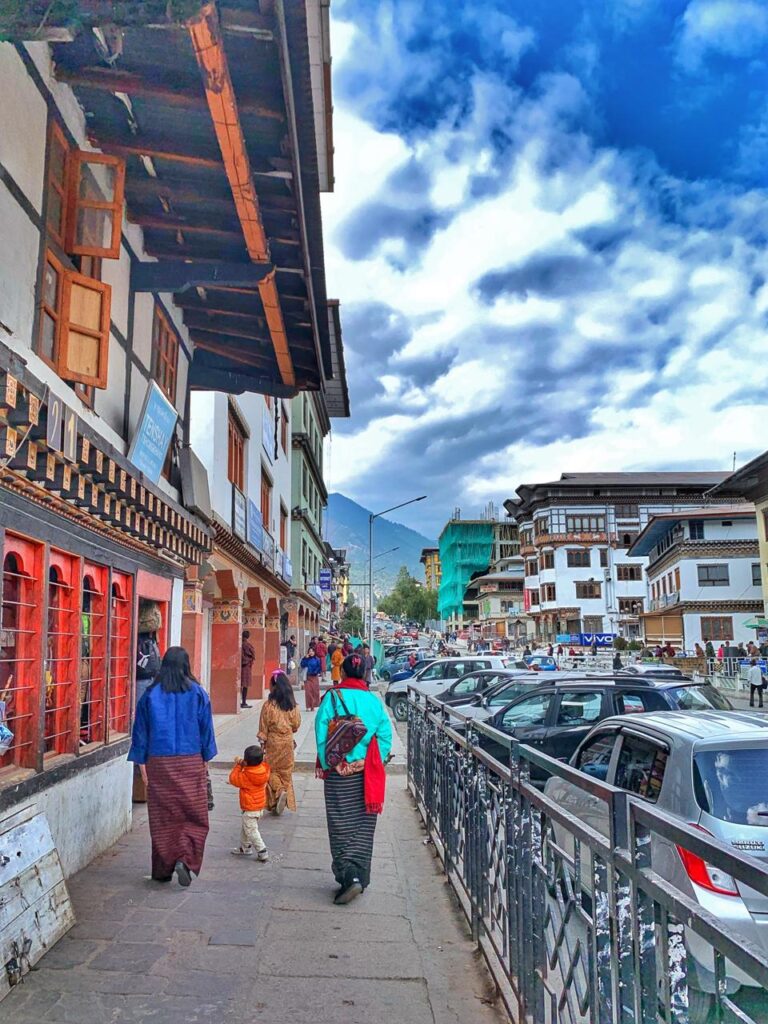
One of the most significant events in Thimphu’s cultural calendar is the Tshechu festival. According to the Bhutanese calendar, this festival is held annually over four days in September or October. It celebrates religious devotion and cultural expression.
At the majestic Tashichho Dzong, the festival comes alive with the mesmerising performances of mask dances, known as Cham dances. These captivating displays of tradition and spirituality draw visitors from far and wide, making the Tshechu festival a highlight of the Bhutanese cultural experience.
Best Time to Visit Thimphu
The best time to visit Thimphu is spring and autumn, specifically from March to May and September to November. The weather during these months is pleasant, and the city is alive with cultural festivities and outdoor activities.
- Spring season — During spring (March to May), Thimphu experiences mild temperatures and blooming flora, creating a picturesque landscape with vibrant colours. This season is perfect for outdoor activities such as hiking, trekking, and exploring the city’s cultural landmarks.
- Autumn season — Autumn (September to November) is another excellent time to visit Thimphu. Clear skies, pleasant temperatures, and breathtaking mountain views characterise this season. It is also ideal for trekking in the surrounding Himalayan ranges, with trails showcasing the stunning autumn foliage.
- Moreover, the famous Thimphu Tshechu festival, a 3-day religious festival, occurs during this time, providing a wholesome cultural experience filled with traditional dances, music, and rituals.
It’s important to note that Thimphu experiences cold winters and monsoon rains during the summer months (June to August). While the winter season offers opportunities for snow enthusiasts and cultural experiences, heavy rainfall during the monsoon season may hinder outdoor activities.
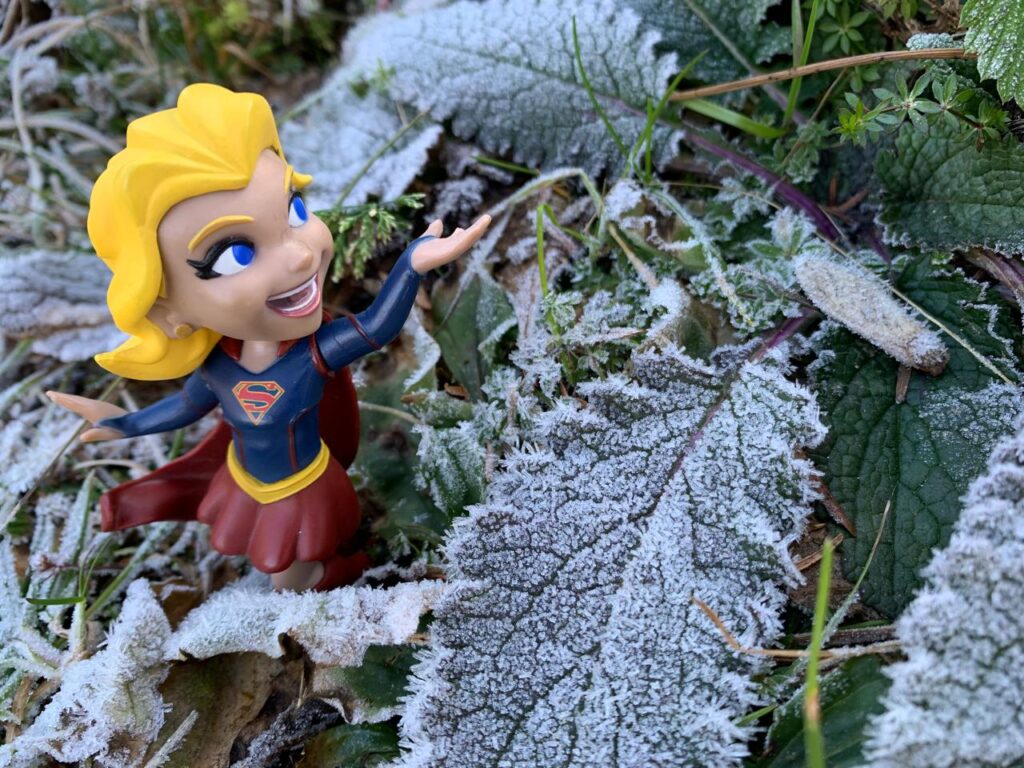
Number of Days Required for Thimphu
Allocate at least three to four days to immerse yourself in Thimphu’s cultural and natural marvels fully. This timeframe allows ample opportunity to explore the city’s renowned landmarks, such as the Tashichho Dzong, Memorial Chorten, and Buddha Dordenma Statue.
Additionally, you can engage in cultural experiences such as attending traditional performances, exploring local markets, and visiting museums and art galleries. My stay in Thimphu spanned two nights and three days.
Sightseeing in Thimphu: Things To Do and See
Explore the captivating sights of Thimphu, Bhutan’s dynamic capital city, with unforgettable experiences. Discover iconic landmarks such as the majestic Tashichho Dzong, where timeless traditions converge with architectural splendour.
Pay homage to the serene Memorial Chorten and marvel at the grandeur of the Buddha Dordenma Statue, which embodies Bhutan’s spiritual essence. Attend traditional performances, wander through bustling local markets, and delve into the rich heritage in museums and art galleries to glimpse the city’s vibrant culture. Thimphu’s sightseeing offerings promise an enriching journey through Bhutan’s culture.
Tashichhoe Dzong
Tashichho Dzong, a majestic fortress monastery, is an iconic symbol of Bhutan’s rich cultural heritage and spiritual legacy. Located on the banks of the Wang Chhu River in Thimphu, this grand tower serves as the seat of both secular and religious authority in Bhutan. Initially constructed in the 13th century and renovated extensively, Tashichho Dzong exudes architectural splendour with its whitewashed walls, golden roofs, and intricately adorned wooden balconies.
The Dzong houses the offices of the King of Bhutan, government ministries, and various religious institutions, making it a centre of political and spiritual significance. Its inner courtyards are adorned with colourful frescoes and exquisite murals depicting Bhutanese mythology and history. The serene ambience within the dzong’s sacred halls offers a glimpse into Bhutan’s spiritual traditions, with monks engaged in prayer and meditation.
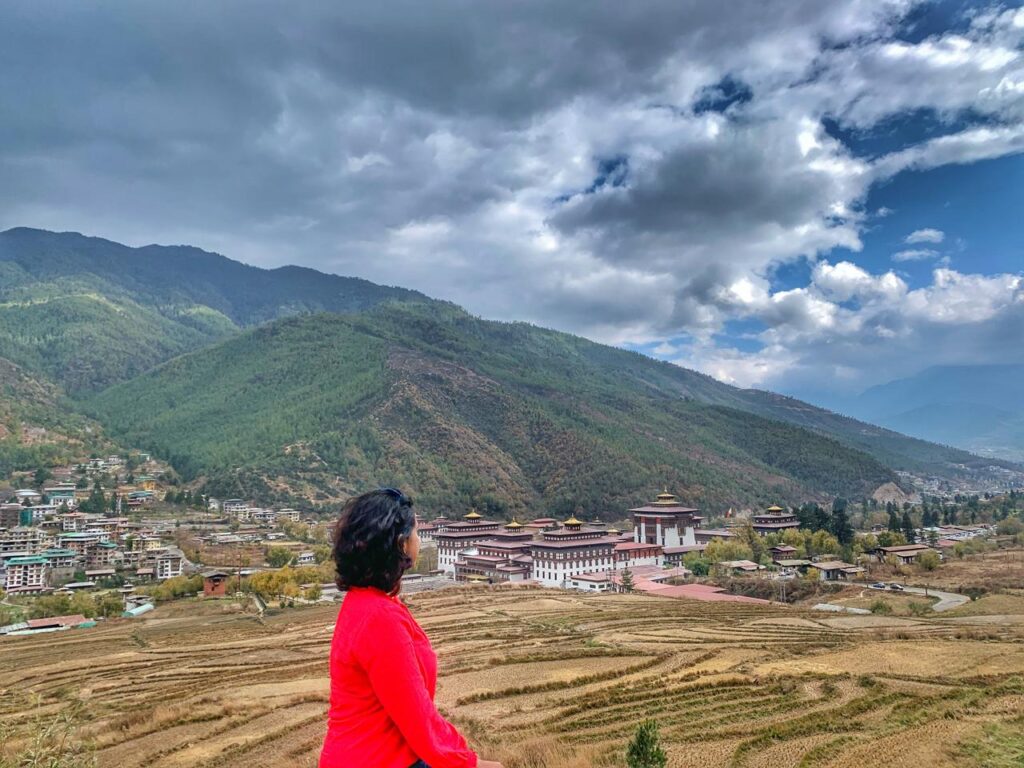
Tashichho Dzong hosts numerous religious festivals and ceremonies throughout the year, including the vibrant Thimphu Tshechu. This annual event features masked dances, traditional music performances, and religious rituals, attracting pilgrims and tourists alike. Tashichho Dzong is Bhutan’s enduring cultural heritage and spiritual devotion, inviting you to experience this revered landmark’s profound beauty and serenity.
Buddha Dordenma Statue
The Buddha Dordenma Statue, a magnificent manifestation of spiritual reverence and artistic grandeur, is a towering symbol of peace and prosperity in the heart of Bhutan’s capital city, Thimphu. Rising 169 feet (51 meters) into the sky atop a hill overlooking the city, this colossal bronze statue of Buddha Shakyamuni commands awe and admiration from all who behold it.
Conceived as a tribute to the 60th anniversary of His Majesty Jigme Singye Wangchuck, the fourth king of Bhutan, the Buddha Dordenma Statue began construction in 2006 and was completed in 2015. The statue’s interior houses thousands of smaller Buddha statues, each meticulously crafted to represent spiritual teachings and enlightenment.
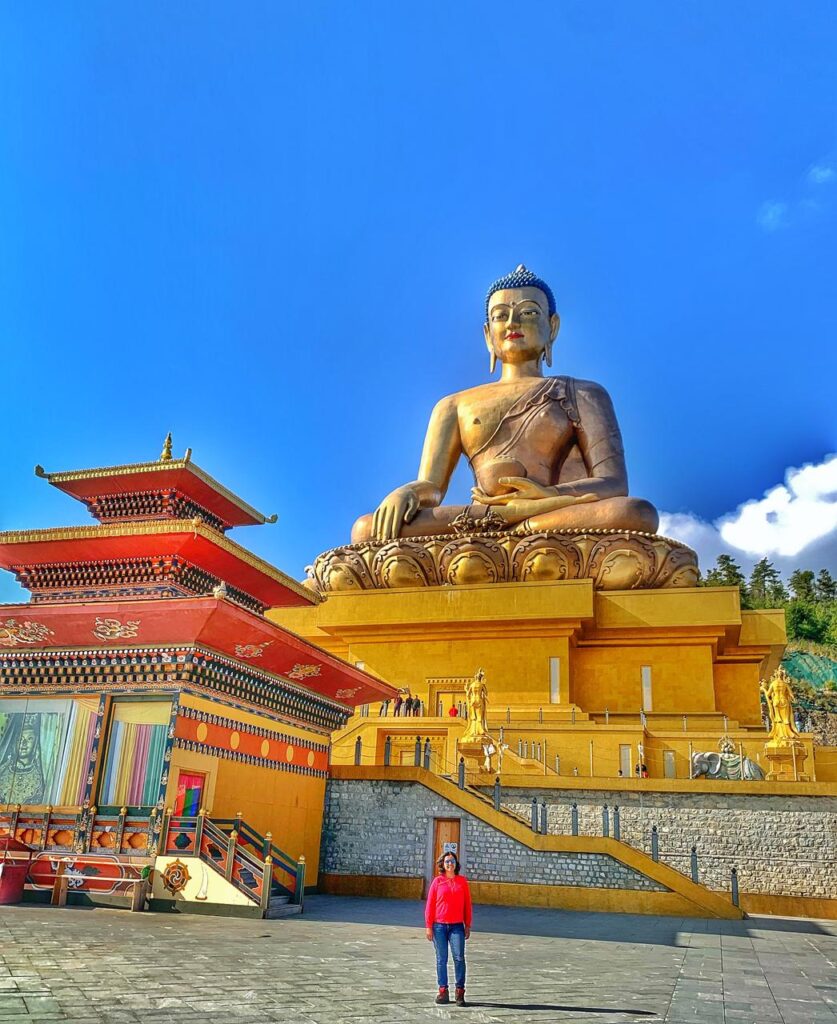
Surrounded by lush greenery and offering panoramic views of the surrounding valley, the Buddha Dordenma Statue is a sacred pilgrimage site and a beacon of calmness for visitors and locals. It symbolizes Bhutan’s commitment to preserving its Buddhist heritage and promoting universal values of compassion, wisdom, and inner peace.
You can ascend to the statue’s base, offering prayers, meditating, and admiring the intricate craftsmanship that adorns this monumental tribute to the enlightened one. As a testament to Bhutan’s devotion to spiritual harmony and cultural preservation, the Buddha Dordenma Statue is an enduring testament to the country’s rich heritage and profound spiritual legacy.
Changankha Lakhang
Nestled atop a ridge overlooking the picturesque valley of Thimphu, Changangkha Lhakhang is a timeless testament to Bhutan’s rich spiritual heritage and cultural significance. This ancient temple, believed to have been constructed in the 12th century by Lama Phajo Drukgom Shigpo, serves as a revered pilgrimage site and a source of hope for devotees and visitors.
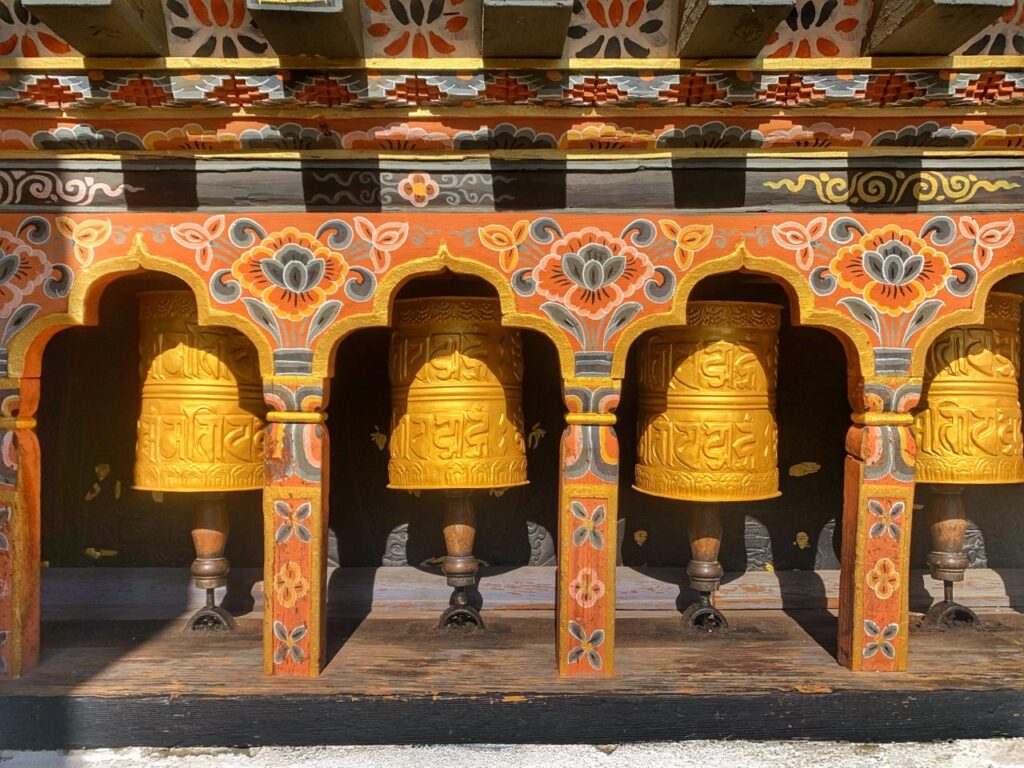
The temple is dedicated to the protective deity Tamdrin, also known as Avalokiteshvara or Chenrezig. In the Buddhist tradition, Tamdrin embodies compassion and mercy. Its sacred halls are adorned with intricate murals, colourful frescoes, and holy relics, offering a glimpse into Bhutan’s vibrant religious artistry and architectural splendour.
Changangkha Lhakhang holds profound spiritual significance for Bhutanese families. Within its sanctified walls, newborn babies are customarily blessed and given auspicious names by the resident lamas. Pilgrims flock to the temple to seek blessings for their children’s well-being and spiritual prosperity, fostering a sense of community and reverence for the traditions passed down through generations.
Surrounded by serene natural beauty and a palpable aura of peace, Changangkha Lhakhang invites you to immerse yourself in the timeless rhythms of Bhutanese spirituality and cultural heritage. This sacred sanctuary offers respite from the bustling world below and embodies the essence of Bhutan’s profound spiritual legacy.
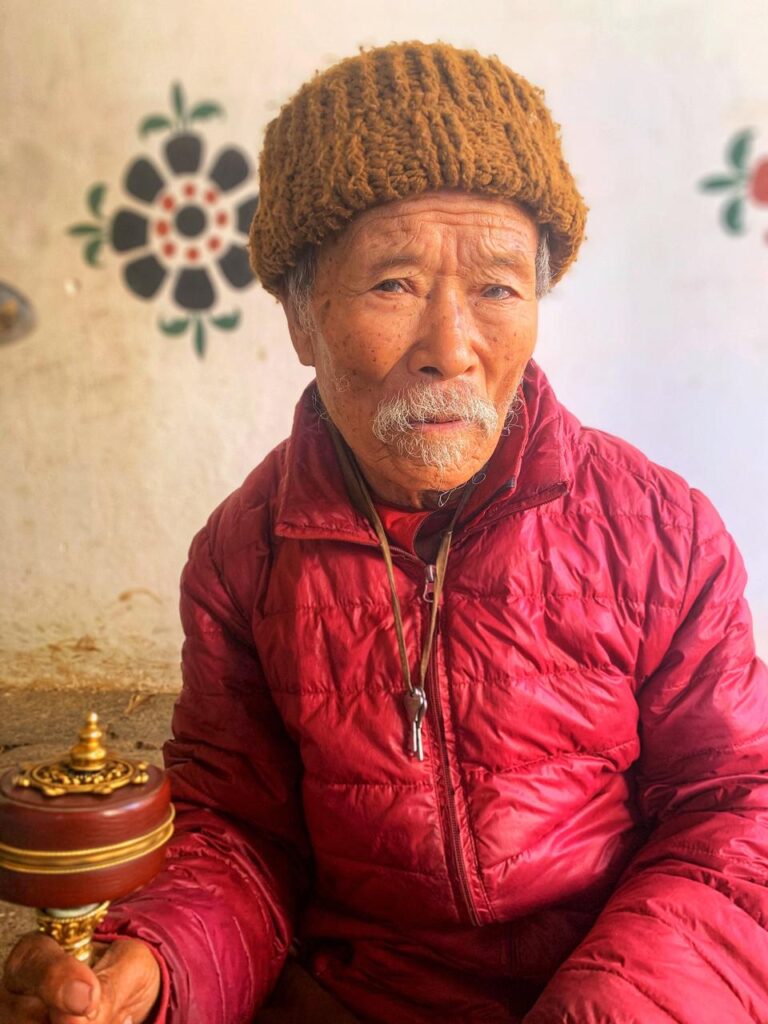
Simply Bhutan
Simply Bhutan is a distinctive cultural museum in Thimphu, Bhutan’s capital. It offers a comprehensive glimpse into Bhutanese people’s traditional lifestyle, customs, and heritage.
Simply Bhutan is designed to resemble a typical Bhutanese village. The architecture, décor, and artifacts create an immersive experience that reflects the country’s rich cultural heritage. The interactive museum allows you to engage with various exhibits and activities.
You can participate in the following activities:
- Traditional Attire: You can dress in traditional Bhutanese attire, such as the gho for men and kira for women. This provides an excellent opportunity for photography and to experience the feel of the local clothing. I wore the kira and took lots of pictures. The attire is beautiful and very elegant.
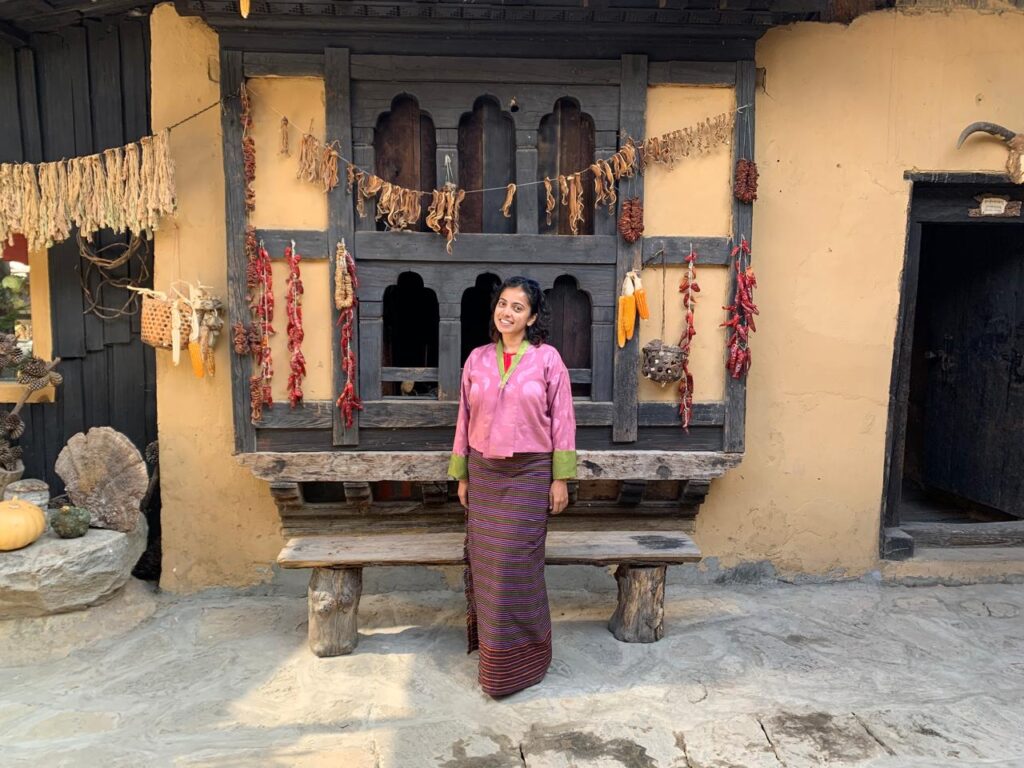
- Arts and Crafts: The museum showcases various Bhutanese crafts, including wood carving, painting, and weaving. You can watch artisans at work and even try their hand at some of these crafts.
- Butter Lamp Lighting: Lighting a butter lamp is common in Bhutanese culture. At Simply Bhutan, you can participate in this ritual, which is often done for religious purposes.
- Traditional Games: The museum offers a chance to play conventional Bhutanese games like archery, Bhutan’s national sport.
- Cuisine: Traditional Bhutanese cuisine can be tasted at the museum’s restaurant, which serves local dishes and provides an authentic culinary experience. I tried the butter tea, which was quite different from the tea we are used to.
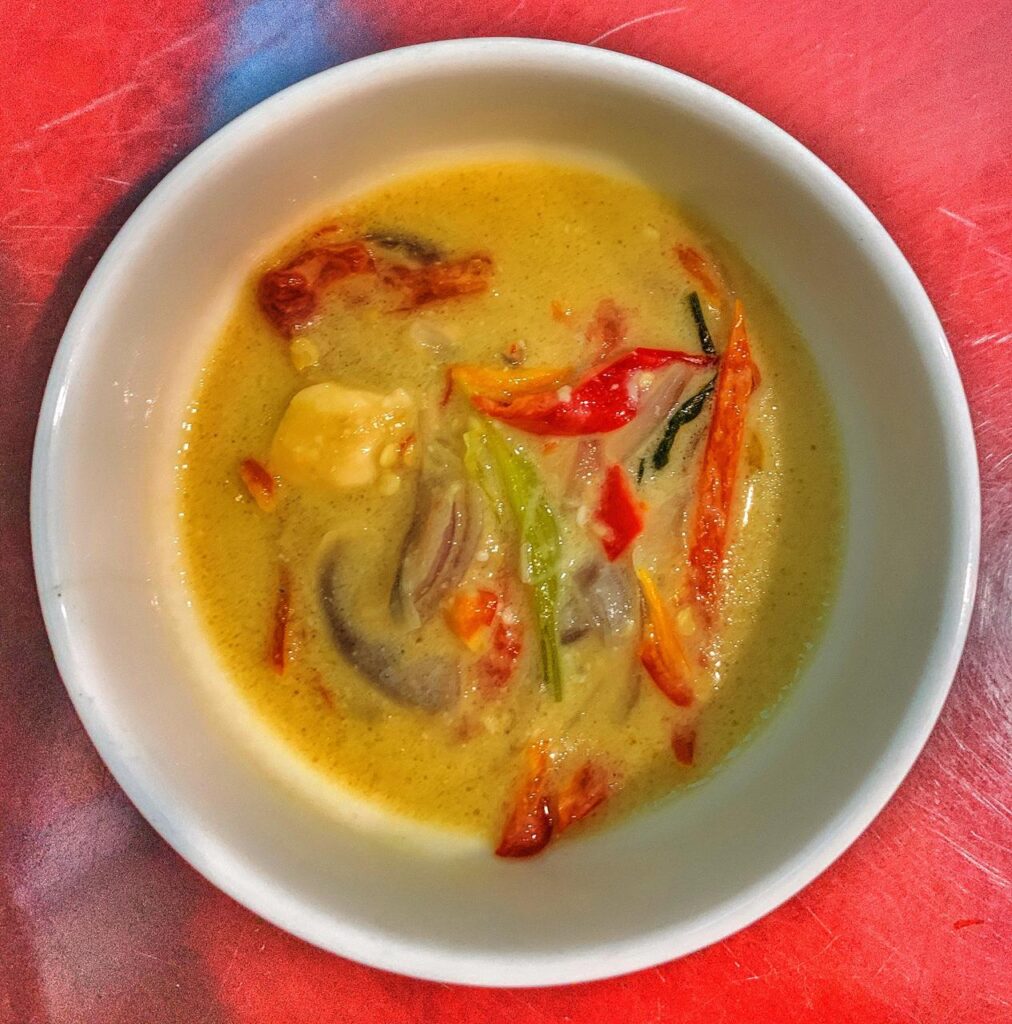
Simply Bhutan often hosts cultural performances, including traditional dances and music. These performances offer a lively and vibrant display of Bhutanese folklore and traditions.
Guided tours are available, providing detailed explanations of the exhibits and activities. The guides are knowledgeable and often share exciting stories and insights about Bhutanese culture and history.
The museum is a tourist attraction and a platform to support local communities. Many of the staff are from nearby villages, and the proceeds from the museum help support local artisans and cultural preservation efforts. I had an opportunity to meet Pema Tshering in his workshop, who does and creates artistic things using his legs.
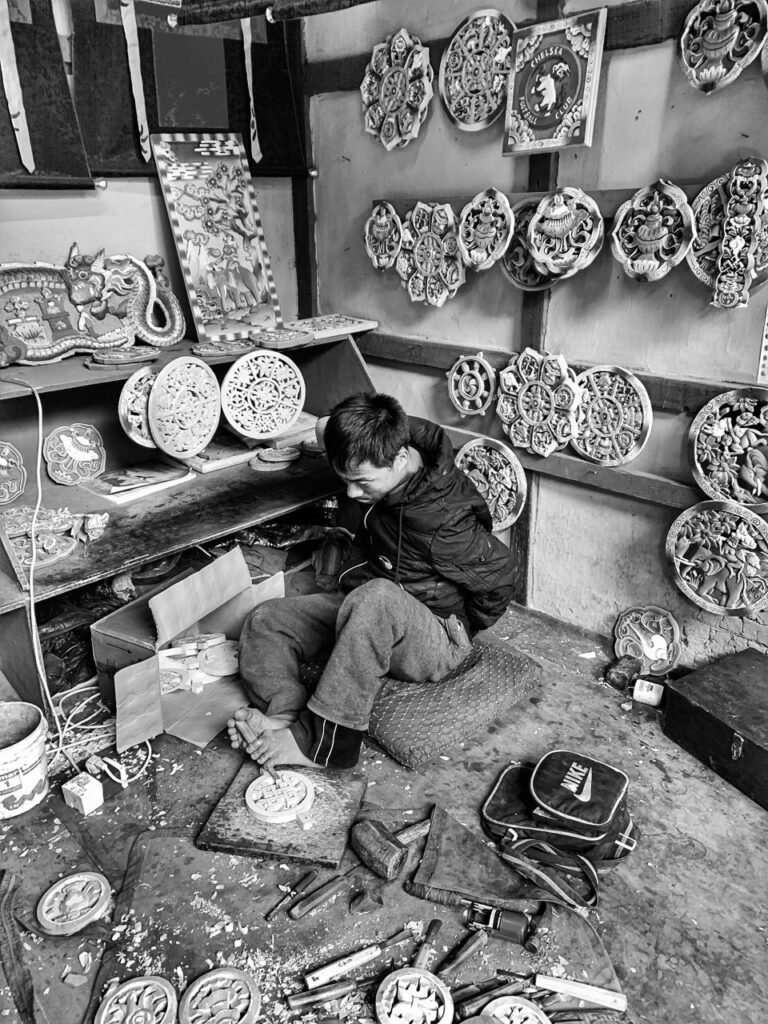
National Chorten Memorial
The National Memorial Chorten, a revered landmark in the heart of Thimphu, Bhutan, is a poignant tribute to the memory of His Majesty the Third King of Bhutan, Jigme Dorji Wangchuck. Constructed in 1974 following the king’s untimely demise, this stately chorten is a focal point for religious ceremonies, meditation, and spiritual reverence.
Designed in the traditional Bhutanese architectural style, the chorten’s whitewashed walls are adorned with intricate carvings and colourful paintings depicting Buddhist deities, mandalas, and sacred symbols. Its golden spires gleam in the sunlight, symbolizing Buddha’s enlightened teachings and the eternal nature of wisdom and compassion.
Surrounded by serene gardens and offering panoramic views of the mountains, the National Memorial Chorten serves as a sanctuary of peace and tranquillity amidst the bustling city. Devotees and visitors from near and far circumambulate the chorten, spinning prayer wheels and reciting mantras, seeking blessings and spiritual solace.
Throughout the day, the air is filled with the musical chants of monks performing rituals and offering prayers, creating an atmosphere of reverence and devotion. The chorten’s timeless presence reminds visitors of Bhutan’s deep-rooted Buddhist heritage and the enduring legacy of its beloved monarchs, inspiring reflection, reverence, and inner peace among all who visit its sacred grounds.
Thimphu Market
Thimphu Market, known as the Centenary Farmers Market, is one of Bhutan’s largest and most vibrant markets. Located near the Wang Chhu River, it is a bustling hub of activity, offering a wide variety of goods and providing a glimpse into the daily life and culture of Bhutan.
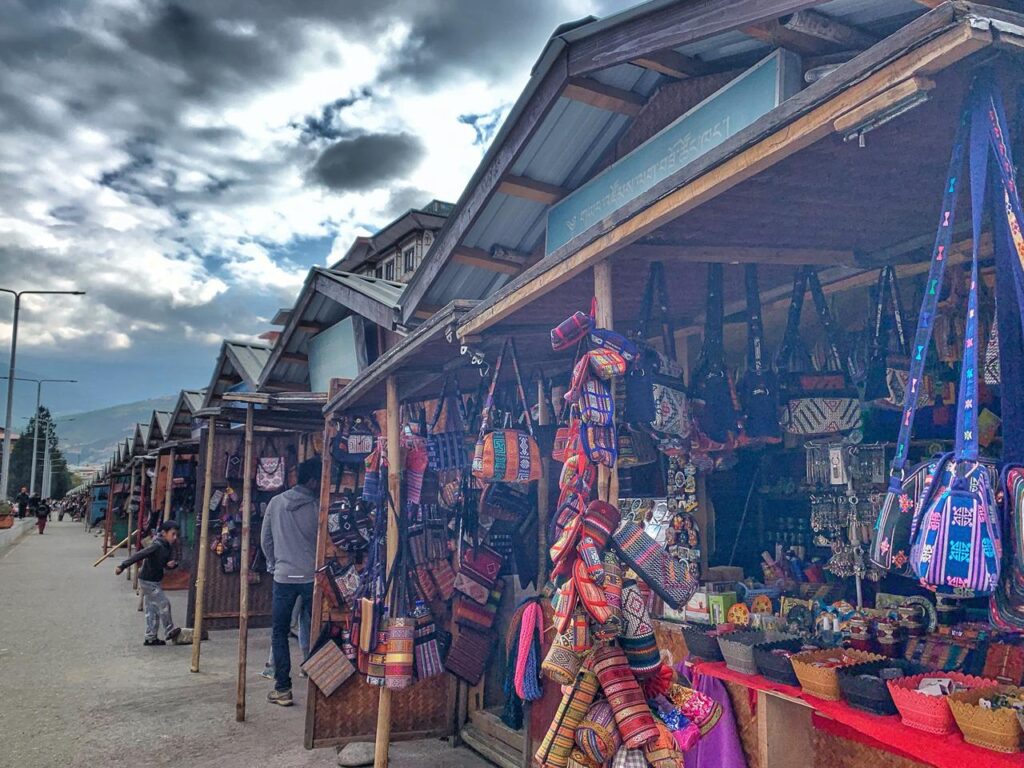
The market is renowned for its fresh produce. Farmers from various regions of Bhutan bring their fruits, vegetables, and other agricultural products to sell. Seasonal fruits and vegetables are abundant, providing a colourful display of local agriculture.
In addition to fresh produce, the market offers a wide range of local products. These include:
- Dried Goods: Various dried fruits, vegetables, and herbs.
- Spices: Various Bhutanese spices include famous red rice and local chillies.
- Dairy Products: Fresh butter, cheese, and traditional Bhutanese dairy products.
Thimphu Market also features stalls selling traditional Bhutanese handicrafts. Visitors can find handwoven textiles, wooden carvings, and other artisanal products that reflect Bhutanese craftsmanship. These items make for unique souvenirs and gifts.
- Timing: Visit early in the morning to see the most vibrant market and get the freshest produce.
- Bargaining: While prices are generally fixed, some vendors might be open to polite bargaining.
- Local Currency: Make sure to carry local currency (Ngultrum), as most vendors do not accept credit cards.
Thimphu Market is a must-visit destination for anyone travelling to Bhutan. It offers a unique opportunity to experience the local culture, taste traditional foods, and purchase authentic Bhutanese products.
Customised Stamps at Thimphu Post Office
The Thimphu Post Office, officially known as the Bhutan Post, offers a unique and delightful service for visitors and locals: customised stamps. This service allows you to create personalized postage stamps featuring your photographs, making for a memorable souvenir or a special gift.
Customized stamps are a one-of-a-kind souvenir that captures a personal memory of your visit to Bhutan. Unlike typical souvenirs, these stamps are functional and personal, reflecting a unique aspect of your journey.
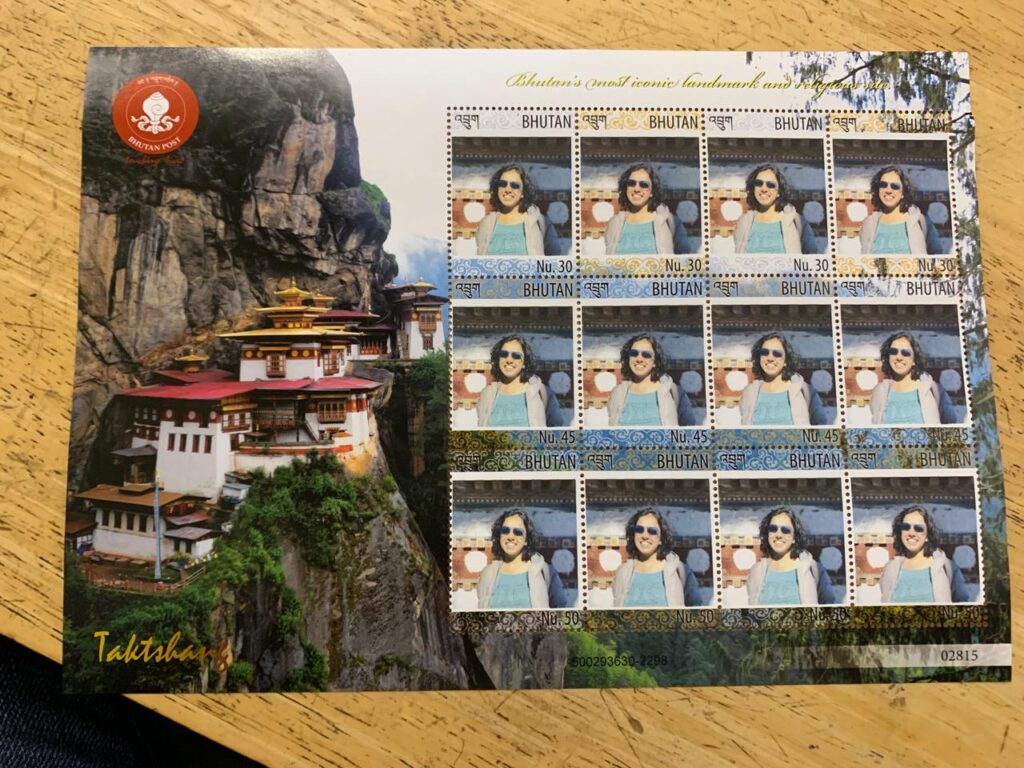
How to Get to Thimphu?
By Air
To get to Thimphu by air, you must fly into Paro International Airport, the only international airport in Bhutan. Thimphu does not have an airport, but it is well connected to Paro, about 50 kilometres away.
- If you have booked a tour package, your tour operator will typically arrange a private transfer from Paro to Thimphu. Note that foreigners (non-SAARC countries) can only travel by hiring a reputed tour operator.
By Road
The drive from Paro to Thimphu takes approximately 1.5 to 2 hours, depending on traffic and road conditions. The drive is scenic, with beautiful landscapes, rivers, and mountains. Taxis are readily available at Paro International Airport. You can hire a taxi to take you directly to Thimphu.
Where to Stay in Thimphu?
Thimphu, the capital of Bhutan, offers a wide range of accommodation options to suit various preferences and budgets. Here are some recommendations for where to stay in Thimphu:
Luxury Hotels
- Pemako Thimphu at Samten Lam, Thimphu – A five-star hotel offering luxurious rooms with traditional Bhutanese decor and modern amenities. It features a spa, multiple dining options, and beautiful views of the surrounding mountains.
- Le Méridien Thimphu at Chorten Lam, Thimphu—This high-end hotel has a contemporary design and Bhutanese influences. It offers spacious rooms, a fitness centre, an indoor pool, and various dining options.
Mid-Range Hotels
- Phuntsho Khangsar Hotel at Thimphu – A well-established 3-star hotel providing comfortable rooms with traditional Bhutanese decor. It features a restaurant, bar, and spa facilities.
- Kisa Hotel at Chang Lam, Thimphu – A boutique hotel with well-appointed rooms and a blend of traditional and modern decor. It offers a restaurant and beautiful views of the city.
- 33 Soksoon Centre for Well-Being and Happiness/Namseling Boutique at Phendey Lam, Thimphu—This is a nice 3-star hotel with clean rooms and a mix of decor. It has an in-house restaurant. I stayed at this hotel during my travel to Thimphu.
Budget Hotels
- Khamsum Inn at Phendey Lam, Thimphu—This budget-friendly hotel offers clean, comfortable rooms with basic amenities. Its in-house restaurant serves local and international cuisine.
- Hotel Kisa Thimphu at Chang Lam, Thimphu – A charming budget hotel with simple yet comfortable rooms. It features a restaurant and provides easy access to major attractions.
Is Thimphu Safe for Solo Female Travellers?
Thimphu is generally considered safe for solo female travellers. Bhutan is known for its low crime rate and friendly, welcoming locals. However, as with any destination, it is essential to take standard precautions to ensure a safe and enjoyable experience.
Solo travellers must book their trips through licensed Bhutanese tour operators. Independent travel is prohibited, so planning your journey with an authorised agency is necessary.
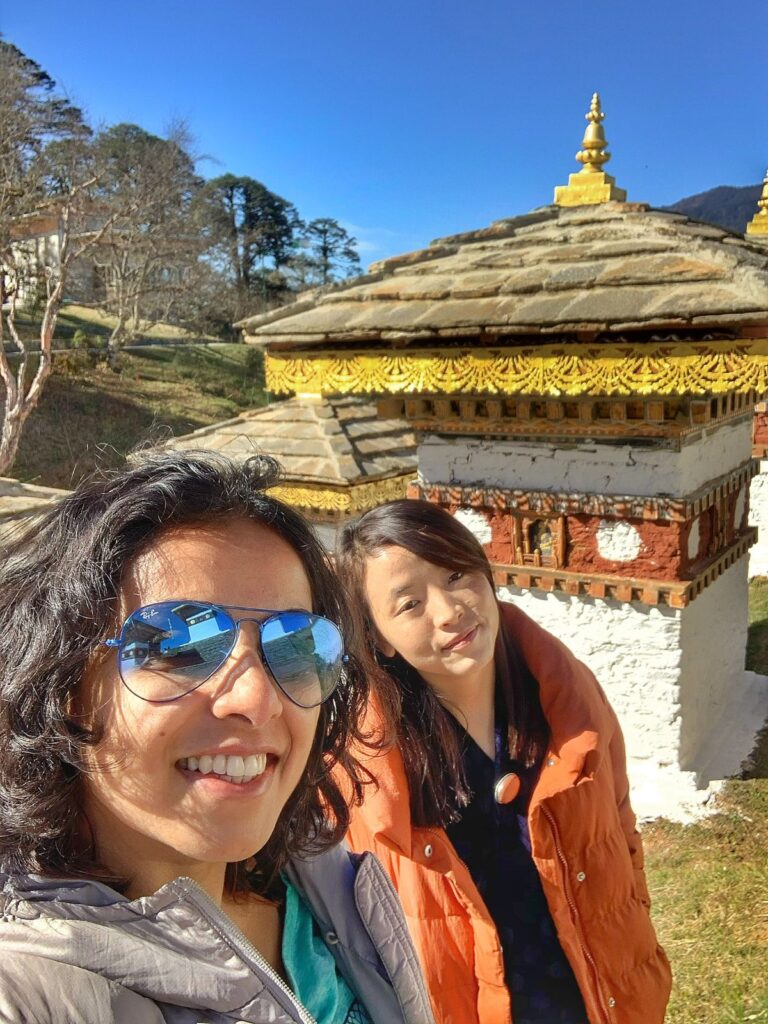
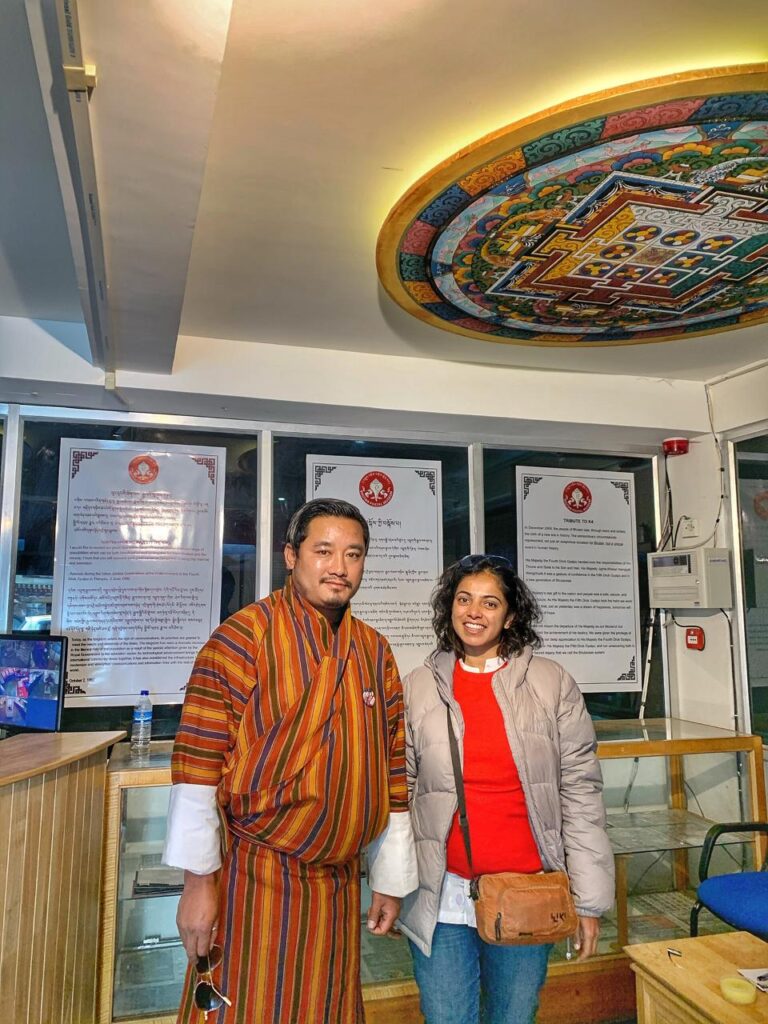
Closing Notes
Sightseeing in Thimphu offers a unique blend of tradition and modernity, providing travellers with a rich cultural experience. Each site reflects Bhutan’s deep-rooted heritage and serene beauty, from the majestic Buddha Dordenma statue to the vibrant Thimphu Market. Thimphu promises unforgettable memories. With its warm hospitality and captivating sights, Thimphu is a remarkable destination for any traveller.
Disclaimers:
- The prices mentioned in the post are valid only at the time of publication. Ensure that you check the booking websites for up-to-date information and prices.
- My opinions and views are unbiased. If the post is a collaboration, then they are specifically mentioned.
- Ensure that you check the relevant websites for up-to-date information on COVID protocols.
- For any adventurous activities, please note that there is a risk that can be dangerous. Ensure you read the terms and conditions recommended by individual agencies and do them at your own risk.
- For visas, it is best to see the embassy website for changing rules.
- While using the recommended guides, auto-drivers or taxi drivers, do your due diligence and trust your judgement.
How can you support me?
You know how much I love coffee, so you can buy me a coffee – Buy me Coffee!
If you liked this article and if it was helpful in your planning or travelling, do share, tweet, or pin this post.
Follow me on Instagram | Facebook | YouTube | Twitter | LinkedIn
Do you have a question? Do you want any suggestions and tips for travel, hikes, and scuba dives? Use the Subscription box below to sign up and get updates by email.
PIN for later reference – Sightseeing in Thimphu
